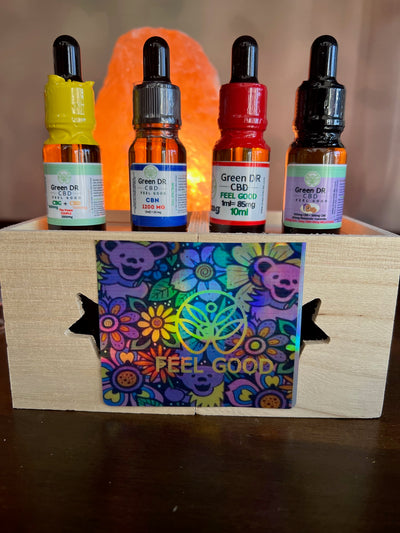All About Green Dr Cbd
Table of ContentsThe Basic Principles Of Green Dr Cbd Fascination About Green Dr CbdAll about Green Dr CbdGetting The Green Dr Cbd To Work
As an example, the most typical problems for which clinical cannabis is utilized in Colorado and Oregon are discomfort, spasticity related to multiple sclerosis, queasiness, posttraumatic stress and anxiety disorder, cancer, epilepsy, cachexia, glaucoma, HIV/AIDS, and degenerative neurological problems (CDPHE, 2016; OHA, 2016 (free cbd samples). We included in these problems of rate of interest by analyzing listings of certifying disorders in states where such use is lawful under state lawThe committee knows that there may be other conditions for which there is evidence of efficacy for cannabis or cannabinoids (https://www.easel.ly/browserEasel/14469639). In this chapter, the board will go over the searchings for from 16 of the most current, good- to fair-quality methodical testimonials and 21 primary literary works posts that ideal address the committee's research study inquiries of rate of interest

For instance, Light et al. (2014 ) reported that 94 percent of Colorado medical marijuana ID cardholders suggested "serious discomfort" as a clinical problem. Furthermore, Ilgen et al. (2013 ) reported that 87 percent of individuals in their research were looking for clinical cannabis for discomfort alleviation. Additionally, there is proof that some people are changing making use of standard discomfort medications (e.g., opiates) with marijuana.
The Best Strategy To Use For Green Dr Cbd
Integrated with the survey data suggesting that discomfort is one of the main reasons for the use of clinical marijuana, these recent records recommend that a number of pain clients are changing the use of opioids with cannabis, regardless of the fact that cannabis has not been approved by the United state
Five good- to fair-quality systematic reviews organized identified. Snedecor et al. (2013 ) was directly focused on pain related to spine cord injury, did not consist of any type of research studies that used cannabis, and just determined one research exploring cannabinoids (dronabinol).

Green Dr Cbd for Dummies
For the functions of this discussion, the primary source of information for the result on cannabinoids on persistent pain was the evaluation by Whiting et al. (2015 ). Whiting et al. (2015 ) included RCTs that compared cannabinoids to usual care, a sugar pill, or no therapy for 10 conditions. Where RCTs were inaccessible for a condition or outcome, nonrandomized studies, consisting of unchecked research studies, were thought about.
( 2015 ) that was particular to the effects of breathed in cannabinoids. The extensive screening approach made use of by Whiting et al. (2015 ) caused Recommended Site the identification of 28 randomized tests in individuals with chronic discomfort (2,454 participants). Twenty-two of these tests examined plant-derived cannabinoids (nabiximols, 13 trials; plant blossom that was smoked or evaporated, 5 trials; THC oramucosal spray, 3 tests; and oral THC, 1 test), while 5 trials evaluated artificial THC (i.e., nabilone).
The clinical condition underlying the persistent pain was most typically related to a neuropathy (17 trials); various other conditions included cancer cells discomfort, multiple sclerosis, rheumatoid joint inflammation, musculoskeletal problems, and chemotherapy-induced discomfort. = 0 (free cbd samples).992.00; 8 tests).
Only 1 trial (n = 50) that analyzed inhaled cannabis was included in the effect size estimates from Whiting et al. (2015 ). This study (Abrams et al., 2007) Suggested that cannabis minimized pain versus a sugar pill (OR, 3.43, 95% CI = 1.0311.48). It is worth noting that the impact dimension for breathed in marijuana follows a different recent evaluation of 5 trials of the effect of inhaled cannabis on neuropathic pain (Andreae et al., 2015).
The Ultimate Guide To Green Dr Cbd
There was also some proof of a dose-dependent impact in these studies. In the enhancement to the reviews by Whiting et al. (2015 ) and Andreae et al. (2015 ), the board determined 2 extra studies on the impact of cannabis blossom on sharp pain (Wallace et al., 2015; Wilsey et al., 2016).
These two research studies are consistent with the previous testimonials by Whiting et al. (2015 ) and Andreae et al. (2015 ), suggesting a decrease in discomfort after cannabis management. In their review, the board discovered that only a handful of research studies have reviewed the use of marijuana in the United States, and all of them examined cannabis in blossom form supplied by the National Institute on Drug Misuse that was either evaporated or smoked.